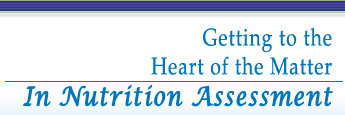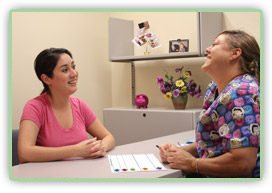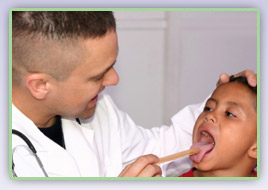
Module 4: Clinical/Medical: 300's
Further down the Yellow Brick Road, you may feel a little stuck like the Tinman, but you have a leg up because you already have your heart. The more practice and oil you have, the more confidence you will achieve in Clinical and Medical Codes.
Have On HAND
Workbook Pages 29-33ABCDE Assessment Tool
Nutrition Risk Manual
Module Summary
The participantís medical history details any condition that has been diagnosed by a medical provider. Medical factors may influence a clientís diet. This Module discusses how to gather medical history information and distinguishes between a medical diagnosis and a self-diagnosis.
Module Goals
- Identify how clinical or medical conditions affect nutritional needs
- Use open-ended questions to gather clinical and medical information and identify appropriate WIC codes (300's)
Module Highlights
What is a clinical or medical code?
This is the participant’s medical history.- Anything diagnosed: A medical provider has officially stated to the participant a medical condition exist.
- Self reported vs. self diagnosed: A client reports to us that they have been diagnosed by a medical provider at some point, this is self reporting. This may be confused by self diagnosing. Examples of self diagnosing would be, the client’s family member has some of the same symptoms and they were diagnosed, or they looked up a website that told them signs point to this disease.
Why would we be concerned with this at WIC?
We want to know if there are any special concerns or considerations and how best to meet the needs of the participants. Medical factors may influence their diets so this is crucial section to fully cover.When do you collect this information?
At initial certifications is when a WIC code would apply. But what happens at mid certification when a participant lets you know that they were recently diagnosed? What would you do with that information? This is where the importance of note taking in the system is especially important. This is information that needs to be followed up on at the next appointment or in many cases when the participant returns to see the dietitian. Is there a situation that this may be a more common scenario?How would you gather this information?
By asking open ended questions, this is all you, no script necessary. Use your ABCDE assessment tool if it helps you remember specific points.Examples:
- Health history example: 1st pregnancy, recent delivery, dental, immunizations.
- Allergies: Seasonal can be a pain, but we are looking for food allergies.
Now it is time for you to view a video and then practice with the activities. Please first watch the video near the top of the screen on the right, then you will be able work on the activities located in the purple box on the right side. When you have completed watching the video and your activities check-in with your Helping HAND before continuing.



